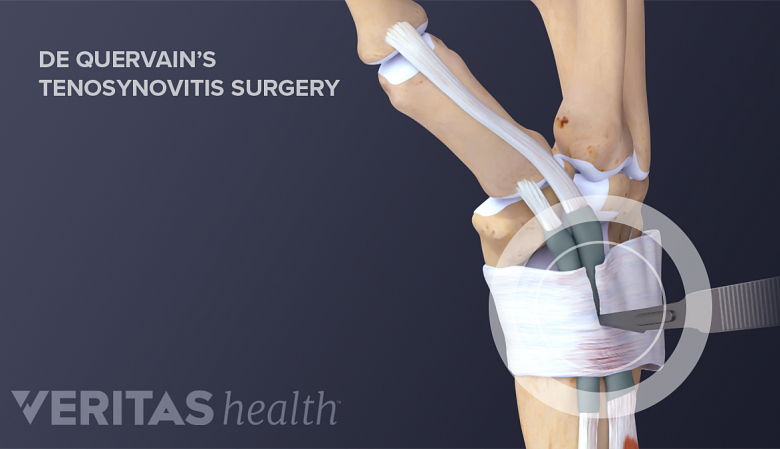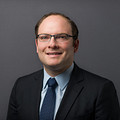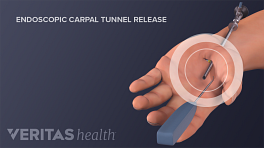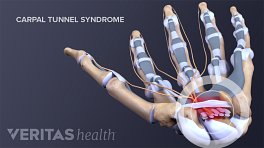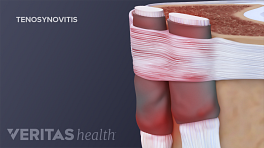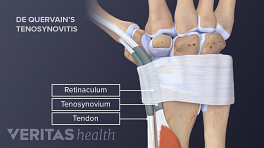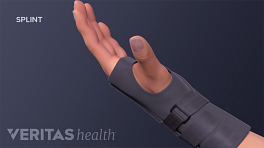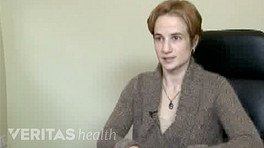If individuals with De Quervain’s tenosynovitis have pursued nonsurgical treatment for several weeks or months without relief from symptoms—or if the condition is severe—a surgical procedure is typically the next course of action.
See De Quervain’s Tenosynovitis
Surgery for De Quervain’s tenosynovitis is largely successful at resolving the condition, and most patients experience relief from symptoms without future recurrence.
See Symptoms and Risk Factors for De Quervain’s Tenosynovitis
Surgery for De Quervain’s tenosynovitis aims to open the compartment that encases the tendons.
In This Article:
- De Quervain’s Tenosynovitis Surgery
- Recovering from De Quervain’s Tenosynovitis Surgery
The goal of the procedure is to open the compartment that encases the tendons, so they can move freely. This is done by severing the extensor retinaculum, a band of fascia that holds the affected tendons in place.
De Quervain’s tenosynovitis surgery is fairly common and is usually performed by an orthopedic surgeon who specializes in the upper extremities.
Preparing for De Quervain’s Tenosynovitis Surgery
To prepare for surgery, patients may be asked to do the following:
- Tell their physician about all the medications being taken, including vitamins and supplements.
- Stop taking medications that can interfere with the blood’s ability to clot.
- Refrain from eating or drinking 6 to 12 hours before the procedure.
The day of surgery, patients will need to arrange for someone to drive them home afterward, since it is an outpatient procedure. The surgery usually takes about 30 minutes.
Step-by-Step Description of De Quervain’s Tenosynovitis Surgery
Here is a detailed description of what to expect during surgery for De Quervain’s tenosynovitis:
- During the procedure, the patient will generally lie down on the back with the arm out to the side. The surgeon will apply a tourniquet to the patient’s arm.
- After sterilizing the hand and wrist, injections numb the wrist, hand, and surgical area. The patient remains awake, as general anesthesia is rarely used for this procedure.
- After the area has been numbed, the surgeon makes a small incision at the base of the thumb and locates the band of fascia that runs across the top of the tendons (the extensor retinaculum). Some surgeons also perform this procedure endoscopically, using smaller incisions and an endoscope to view the surgical area.
- The surgeon releases the extensor retinaculum by severing it, taking care not to damage the tendons underneath or nearby radial nerve.
- The surgical instruments are removed and the incision in closed with stitches. The surgical site is then bandaged.
- After a brief recovery period, the patient will be free to go home on the same day as the surgery.
After surgery, patients begin a recovery process in the days and weeks that follow. Most patients experience relief from pain and other symptoms after 6 to 12 weeks of recovery.
